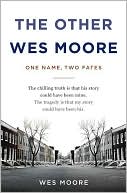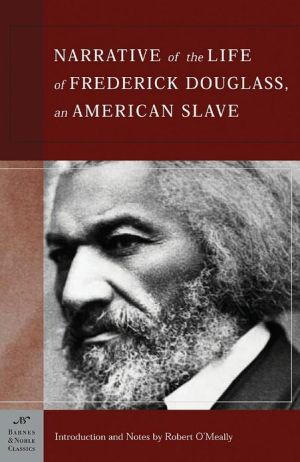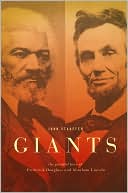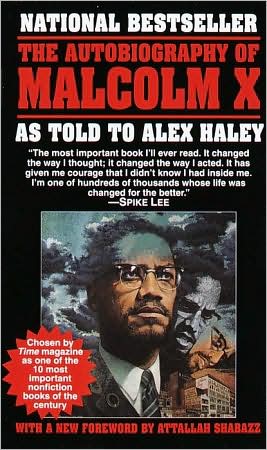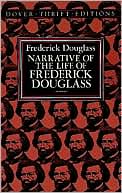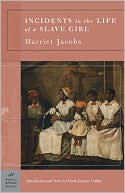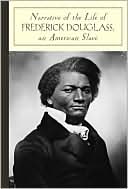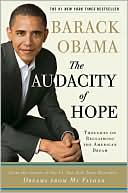To Tell the Truth Freely: The Life of Ida B. Wells
Born to slaves in 1862, Ida B. Wells became a fearless antilynching crusader, women's rights advocate, and journalist. Wells's refusal to accept any compromise on racial inequality caused her to be labeled a "dangerous radical" in her day but made her a model for later civil rights activists as well as a powerful witness to the troubled racial politics of her era. Though she eventually helped found the NAACP in 1910, she would not remain a member for long, as she rejected not only Booker T....
Search in google:
Born to slaves in 1862, Ida B. Wells became a fearless antilynching crusader, women’s rights advocate, and journalist. Wells’s refusal to accept any compromise on racial inequality caused her to be labeled a “dangerous radical” in her day but made her a model for later civil rights activists as well as a powerful witness to the troubled racial politics of her era. Though she eventually helped found the NAACP in 1910, she would not remain a member for long, as she rejected not only Booker T. Washington’s accommodationism but also the moderating influence of white reformers within the early NAACP. In the richly illustrated To Tell the Truth Freely, the historian Mia Bay vividly captures Wells’s legacy and life, from her childhood in Mississippi to her early career in late-nineteenth-century Memphis and her later life in Progressive-era Chicago.Publishers WeeklyBay (The White Image in the Black Mind) delineates journalist and antilynching crusader Ida B. Wells's life (1862-1931) and her passionate commitment "to a range of causes so extensive that they defy easy summary." When her parents died in 1878, 16-year-old Wells became the head of her family, caring for her five siblings. After a brief stint teaching, she found her two callings-political activism and, more powerfully, journalism, becoming by the late 1880s "one of the most prolific and well-known black female journalists of her day." In 1884, she sued the Chesapeake, Ohio and Southwestern Railroad over segregated cars; in 1889, she became part owner and editor of the Memphis Free Speech newspaper. In 1892, catalyzed by the lynching of three black businessmen, she devoted herself to "an anti-lynching campaign that would cost her the Memphis newspaper, threaten her life, and sever her ties to Memphis forever." Bay relies heavily on Wells's published writing, especially her posthumous autobiography, Crusade for Justice, supplemented by secondary sources, making this a useful book for students. The perilous edge that Wells traversed, however, is blunted; she led a life full of drama, but Bay's quotidian account is an utterly unexciting summary. (Feb.)Copyright © Reed Business Information, a division of Reed Elsevier Inc. All rights reserved.
\ Introduction \ "If Iola Were a Man"\ As the Nineteenth Century came to a close, a young African American woman named Ida B. Wells was acclaimed "the most widely known woman of her race in the world."1 Born a slave in Civil War-ravaged Mississippi,Wells achieved freedom with emancipation, and international renown in the 1890s, when she rose to fame as a journalist, speaker, and civil rights activist who led an international crusade against lynching. She was just thirty years old when she first began her campaign to end the brutal white-on-black mob violence that took the lives of at least 3,220 African American men, women, and children between 1882 and 1930—a period that marks the high tide of this violence. Wells would remain an antilynching crusader all her life, with good reason. During much of it, lynching was so popular in the South that it was commemorated in postcards featuring the dead black bodies hanging from trees, bridges, and streetlights. And even outside of the South, the mob violence went almost wholly unchallenged until Wells began her antilynching crusade. The lynch mobs' victims, usually both black and male, were sometimes accused of rape, and invariably condemned as criminals after the fact—although they were put to death without judge or jury. As the postcards advertising these lynchings testify, the practice was not covert. Instead, it was the work of white mobs who displayed dead African American bodies to underscore their continuing racial dominion over a people only recently freed from slavery.\ A member of that new generation of ex-slaves, Ida B.Wells came of age at a time when her people needed aggressive leaders who could combat the erosion of black civil and political rights that accompanied the end of the Reconstruction era. By the late nineteenth century, the voting rights, political power, and social freedoms that African Americans had won when the South was first reconstructed after the Civil War were under assault. Anxious to restore the white supremacy that slavery had once guaranteed, white Southerners used mob violence, political terrorism, and election fraud to drive the freed people and their Republican allies out of politics. What came next was a Jim Crow South, where few African Americans voted, and all were subject to segregation and many other forms of legal and economic discrimination. While white Southerners called the end of Reconstruction a blessed "Redemption," among African Americans it represented a devastating setback in the struggle for freedom that dated back to slavery. Moreover, it came at a time when many of the black leaders who had led that struggle were too old to head the new battle now needed to protect emancipation's freedoms. A new generation of black leaders was needed, and Wells would become one of them.\ Born to slave parents in 1862, she had defied remarkable odds before she ever embarked on her antilynching campaign. Orphaned at age sixteen when her parents died in the yellow fever epidemic that swept the Mississippi Valley in 1878, she raised her five younger siblings by herself, taking a teaching job in a rural school that same year. Her own education remained incomplete as a result, but Wells pursued a tireless course of self-education, reading and writing her way into a career in journalism under the pen name "Iola." By her late twenties, Wells had become one of the preeminent female journalists of her day, and the editor and co-owner of the Memphis, Tennessee, newspaper Free Speech and Headlight. Now widely acclaimed as "Iola, the Princess of the Press,"Wells saw her career almost derailed in the spring of 1892, when a white mob lynched three black businessmen in Memphis. Shocked by the violence and mourning the death of three men she had known for years, one as a close friend,Wells protested the murders.\ She also began an investigation of lynching that would last a lifetime and see her exiled from the South. The three men who died in Memphis had committed no crime other than to open a store that challenged a nearby white-owned business. Accordingly, their deaths inspired Wells to research the causes of lynching. White Southerners justified lynching as a necessary "check on the horrible and beastly propensities of the black race." Black men were prone to the crime of rape, they insisted. Only "the most prompt, speedy and extreme punishment" could prevent them from preying on "weak and defenseless [white] women."2 But as Wells soon discovered, more than two-thirds of the African American men murdered by lynch mobs were never even accused of rape. Indeed, like her dead friend, many of the victims of white mob violence were never accused of any serious crime. Outraged by her findings, Wells wrote an editorial indicting Southern whites for lynching black men "on the old threadbare lie that black men rape white women," which soon brought death threats that forced Wells to leave the South.3 She left just ahead of the white mob that attacked the offices of Free Speech, smashing her presses and shutting down her paper. But the attacks made her all the more determined to expose lynching's true cause by telling "the truth freely."4\ After she left Memphis Wells launched an antilynching campaign that took her from Tennessee to New York, Great Britain, and Chicago, and garnered her new acclaim as one of the most forceful African American leaders of the day. Her antilynching campaign, as one contemporary commentator noted, addressed the most urgent issue facing black America at a time when "none of our representative and most prominent black men would take up the lead." Another deemed her "the only successor to Frederick Douglass"—the former fugitive slave who became black America's great antislavery leader. As such observers were well aware, the two black leaders had much in common. "Both were editors, both were orators, and both began their careers passionately committed to righting the worst forms of injustice that, in their respective times, were inflicted on their people," writes Douglass biographer William McFeely.5 Moreover, after the two met in 1892, they became fast friends; Douglass wrote a number of letters of support for Wells, including testimonials for the antilynching pamphlets Wells published before Douglass's death in 1895—providing a public record of his support for her.6 In his seventies by the time they met, Douglass served as both a mentor and a role model to Wells, whose antilynching campaign mobilized some of the same international reform networks Douglass had once rallied to the antislavery cause.\ The British, in particular, had lent powerful moral authority and financial support to the abolitionist movement. They proved a crucial audience for Wells, who, at the beginning of her campaign, had trouble even gaining a hearing among whites at home. American whites in both the North and the South chose to regard lynching as a Negro problem largely brought on by the criminal character of the race, but the British proved more receptive to Wells's well-researched analysis of its true causes. Moreover, they were also supportive when Wells asked them to once again champion the unrealized liberties of the freed people—just as they had supported their emancipation. The result was the formation of a much publicized British Anti-Lynching Committee, which shamed a number of American states into drafting, and in some cases even passing, antilynching legislation, and fostered an Anglo-American discussion of lynching that made headlines in both countries.\ Lynching did not end in the 1890s, or for many years to come. But Wells's campaign transformed lynching from a practice that went largely uncontested even among Northern whites into an ugly symbol of the racial injustices of Jim Crow. Not the first African American to speak out against lynching, Wells was the first to gain a broad audience. Her work is notable for crafting an analysis of lynching that remains pathbreaking even to this day. In challenging the practice, Wells cut through the myths about black rapists that white Southerners used to defend lynching. Lynching had nothing to do with rape and everything to do with power, Wells argued, presenting the facts and figures to prove it. White men policed the color line even to the point of murdering black men who engaged in consensual relationships with white women, and most lynchings did not involve allegations of rape. Instead, lynchings sustained the all-encompassing system of racial domination that marked the New South by terrorizing blacks and "keeping the nigger down."\ Subsequent civil rights activists would agree, organizing much of the early twentieth-century civil rights struggle around antilynching strategies pioneered by Wells. But Wells would not lead them, nor go on to be Frederick Douglass's successor. Although she appears among the major leaders of the race in an 1895 photo collage that includes Frederick Douglass and Tuskegee Institute principal Booker T. Washington, she would have trouble sustaining prominence as a national leader even through the remainder of the 1890s. Eclipsed at least in part by Washington's meteoric rise to fame on a platform of black accommodation to Jim Crow, she also during those years became a wife and mother, marrying the Chicago-based African American lawyer Ferdinand Barnett. Thereafter, she juggled her public life with domestic responsibilities that included two stepsons and soon came to include four children of her own. But neither motherhood nor the growing power of Booker T. Washington fully explain why Wells's sojourn in the national spotlight was so brief. An activist all her life, Wells would continue to battle lynching and other forms of racial injustice for the remainder of her days. But she ended her life as a leader more prominent in Chicago than the nation as a whole.\ Undoubtedly, sexism circumscribed her career, as did her assertive personality, which many contemporaries found to be at odds with her gender. Even her admirers could never compliment her leadership without noting that it was ill-suited to her sex. "If Iola were a man," black journalist T. Thomas Fortune said of Wells after first meeting her, calling her by her pen name, "she would be a humming independent in politics. She has plenty of nerve, and is sharp as a steel trap." And over time, such admirers would often turn on Wells for possessing traits admirable only in men. Fortune himself was a case in point. By 1899, Fortune, who had once employed Wells at his newspaper The New York Age, had allied with Booker T. Washington, and began to dismiss his former protégée as "a bull in a China shop."7\ Whether Wells's career would have indeed taken a different path if she had been a man remains impossible to say, although her contemporaries' persistent unease with her gender suggests as much. An activist by nature, Wells had limitations above and beyond her sex when it came to sustaining a following. She often resisted the "restraints of organization," as a later critic would note. Hardheaded to a fault, and possessed of a temper that she acknowledged to be a "besetting sin,"Wells helped build a stunning variety of black organizations, including the National Association for the Advancement of Colored People (NAACP), only to find herself comfortable in none of them. More radical than most of her contemporaries, she also had no gift for compromise and often departed in a huff from the organizations that she helped create, her famous temper flaring when negotiations did not go her way. As a result, her contemporaries considered her difficult, although even that assessment cannot be decoupled from her gender. With the possible exception of Booker T. Washington, most of the leading African Americans of her era were difficult, in one way or another.\ Early twentieth-century black leaders had to contend with a racist white majority that questioned their qualifications for leadership, while defending their community against a relentless assault on black civil rights. Not surprisingly, strong personalities prevailed among their ranks. Such personalities included the NAACP leader W.E.B. Du Bois, who deposed Booker T. Washington to become the early twentieth century's most preeminent leader. A man who frequently butted heads with Wells, Du Bois was often described as "arrogant."He spent much of his career battling with both black and white contemporaries—without ever being written off as "a bull in a China shop." A strong mind was more of a liability in a woman.\ Moreover, Wells-Barnett—as she renamed herself after her marriage—had other leadership liabilities as well. Born at the end of the slavery era, she became a leader without the help of the kind of educational or social credentials that would help younger black leaders such as Du Bois earn the respect of the increasingly educated black middle class—and their white allies as well. Although Wells was active in the Progressive-era reform community, her credentials as wife, mother, and self-educated journalist paled next to the academic credentials that supplied many black and white progressives with their leadership qualifications. She was also less educated and socially elite than many of the black club women she helped organize during her antilynching campaign. Founded in 1896, the National Association of Colored Women (NACW) first took shape around her work, but she was never considered for any leadership post in that organization.\ Disappointed but never despairing about the many obstacles her leadership faced, Wells remained committed to the "preservation of our [African American] liberties" all her life. Tireless foes of mob violence in Illinois, she and her husband, Ferdinand, fought a successful battle for effective antilynching legislation there, and then moved on to fight injustices within the state's legal system, offering representation to blacks who had been unfairly imprisoned, and support and guidance to black prisoners as a group. Moreover, even though Wells would not remain active in the NAACP or the NACW or any other national organization, she continued to fight lynching and other forms of racial injustice in Illinois and elsewhere, protesting the race riots of the twentieth century's first decades as well as the federal government's mistreatment of black soldiers during World War I. Also active on behalf of early childhood education, women's suffrage, temperance, and the social welfare of Chicago blacks, Wells was involved in Republican politics, and even made an unsuccessful bid for a state senate seat in Illinois in 1930—at age sixty-eight. Her campaign capped a life committed to a range of causes so extensive that they defy easy summary. Raised by ex-slaves and informed by an education that included reading the Bible cover to cover and imbibing all the most activist elements of the Judeo-Christian tradition, Ida always felt compelled to "do something" in the face of "injustice or discrimination." Her life bears eloquent testimony to the power of that commitment. An African American leader barely a generation removed from slavery, Wells drew on forms of antebellum politics that survived the Civil War but have not always been appreciated by historians since. In particular, the keen political insights that Wells brought out of her ex-slave upbringing lend strong support to the work of scholars such as Steven Hahn, who maintains that black Southerners greeted emancipation with enduring political and moral commitments forged during slavery and fostered thereafter in the kinship networks that guided the freed people through emancipation.8 Moreover, Wells embraced the tradition of noisy public protest nourished among antebellum-era blacks who escaped the slave South, combating lynching with protest strategies once used by black abolitionists and allying herself with the ex-slave leader Frederick Douglass.\ Although the African American protest strategies and political traditions that Wells did so much to help sustain would shape the twentiethcentury civil rights movement, Wells herself was underappreciated during her own lifetime. As she got older, she found herself increasingly overshadowed by a new generation of black leaders—many of whom were active in organizations she had helped found. She had spent most of her life far "too busy trying to do what seemed to me to be my share of work for the race . . . to write about myself," so in her sixties Wells decided to "set it all down." Intent on leaving "some record of the beginnings of agitation against lynching," she interrupted her busy career as a reformer to write a long autobiography that she never managed to finish.9 Despite this effort, after her death in 1931 her reputation languished for many years, neglected by a historical profession long uninterested in the history of African Americans or women.\ But as the twenty-first century opens, Ida B. Wells is well on the road to achieving all the honors and recognition never accorded her in her lifetime. Even as Wells's star dimmed after her death, her youngest daughter, Alfreda Duster, preserved her mother's papers, edited her autobiography, and worked tirelessly to secure its publication. She finally succeeded in publishing Crusade for Justice: The Autobiography of Ida B. Wells in 1970, at a time when black history and women's history were finally beginning to receive widespread attention. Since then, Wells has been studied by an ever increasing number of scholars and biographers, whose work appreciates the importance of her antilynching campaign and pioneering history as a female leader. Far from forgotten, Wells now receives a full measure of the public recognition that eluded her during the second half of her life. Studied and taught in school and college curriculums, she was even featured on a U.S. postage stamp issued in 1990. And in 2005, her work was lauded on the floor of Congress. The Senate adopted a "nonbinding" resolution "apologizing to the victims of lynching and the descendants of those victims for the failure of the Senate to enact antilynching legislation" (which did not receive a unanimous vote).Too little, too late, Wells might have thought with reference to the Senate resolution. But she might also take comfort in the fact that today her life and work are not just honored but also studied and taught, ensuring that her "crusade for justice" will have a continuing impact on future generations.\ Wells is now appreciated as an important historical figure not in the least because her life and work illuminate dilemmas that still vex us today. Racism and sexism still shape American politics in myriad ways, coloring popular perceptions of both black and female leaders and perpetuating the challenges to black female leadership that Wells faced. Moreover, Wells's life provides invaluable historical testimony on the often contradictory impact of being black and female at the turn of the nineteenth century—a time when the lives of most black women went unrecorded. Among the relatively few African American women of her era to leave a life chronicled well enough to be studied or remembered in any detail, Ida documented experiences that would otherwise be lost to history. A journalist and an activist, she left behind many news articles, editorials, petitions, and protest pamphlets. She was also a prolific correspondent and compulsive writer who recorded the details of her life in diaries, letters, and a long autobiography. Many of her diaries and much of her personal correspondence are long gone—burned in a house fire that destroyed many of her papers. But, carefully preserved by Alfreda Duster, Wells's autobiography and her surviving diaries and papers combine to provide a rich documentary record of the life of a woman whose observations about her world remain insightful even today.\ Not the least bit representative of mainstream modes of thinking common to her day—among whites or within her own community—Wells was an extraordinary individual. Her biography offers far more than a useful chronicle of her times or a life characteristic of her era. An unrelenting and insightful social critic, Wells spent her life testifying to the social, political, and economic evils of her era and thereby recording the toll they took on a generation of African Americans who, by and large, lacked the education, opportunity, and political freedom to speak for themselves. An indignant witness to the violence, segregation, and other forms of racial discrimination white Southerners used to restore white supremacy, her life preserves a history of black activism and female leadership that historians are just now beginning to recover. Moreover, her commitment to " 'do something' about every item of injustice and discrimination . . . whatever the matter happened to be" makes her a hero whose life still stands as both a lesson and a challenge to modern-day Americans—black or white, male or female. Always impatient with anyone unwilling to speak out against injustice, Wells reflected on the ongoing challenge faced by those who shared her commitment to equality and civil rights. "Eternal vigilance is the price of liberty" was the motto she used to begin the final chapter of an autobiography too often interrupted by her protest activities to be completed.10\ Excerpted from TO TELL THE TRUTH FREELY by MIA BAYCopyright © 2009 by Mia BayPublished in 2009 by Douglas & McIntyre Ltd.\ All rights reserved. This work is protected under copyright laws and reproduction is strictly prohibited. Permission to reproduce the material in any manner or medium must be secured from the Publisher.
List of Illustrations 3Introduction "If Iola Were a Man" 31 Coming of Age in Mississippi 152 Walking in Memphis 403 The Lynching at the Curve 824 Exile 1095 Capturing the Attention of the "Civilized World" 1516 "Although a Busy Woman, She Has Found the Time to Marry" 1917 Challenging Washington, D.C. - and Booker T. 2328 Reforming Chicago 2749 Eternal Vigilance Is the Price of Liberty 314Notes 329Acknowledgments 359Index 361
\ From the Publisher\ “Mia Bay . . . brings dimension to history’s minimalist portrait of [Ida B. Wells] in her insightful new biography . . . Bay’s book gives credit where it’s long overdue.” —Sandy Nelson, The Santa Fe New Mexican “In the richly illustrated To Tell the Truth Freely, the historian Mia Bay vividly captures Wells’s legacy and life, from her childhood in Mississippi to her early career in late nineteenth-century Memphis and her later life in Progressive-era Chicago.” —The African American Book Review “This well-researched book . . . should be useful to both mass communication scholars and a general audience, thanks to Bay’s fluid writing style, attention to details, and facts.” —Jinx Coleman Broussard, Journalism History “In this remarkable book, Mia Bay understands Ida B. Wells in full—as thinker, writer, crusader, politician, and woman of the world. Finally, we have a biography worthy of one of the bravest and most influential activists in U.S. history.” —Michael Kazin, author of A Godly Hero: The Life of William Jennings Bryan “Ida B. Wells is one of America’s most important yet relatively unknown historical figures. Absorbing and insightful, To Tell the Truth Freely deftly chronicles the way in which her extraordinary life and career altered the evolution of race and democracy in late nineteenth- and early twentieth century America.” —Peniel E. Joseph, author of Waiting ’Til the Midnight Hour: A Narrative History of Black Power in America “Mia Bay’s biography of Ida B. Wells is as sharp and sassy as the woman herself. The vigilance and bravado of this dynamic black woman crusader shines through on every page. Bay’s triumphant tapestry reveals the life and times of an unsung heroine woven into battles for African American freedom.” —Catherine Clinton, author of Harriet Tubman: The Road to Freedom “At last—an eloquent, concise, yet richly detailed account of Ida B. Wells. Beautifully crafted, this book restores Wells to her rightful place in American political history by telling her story with verve and grace.” —Barbara D. Savage, author of Your Spirits Walk Beside Us: The Politics of Black Religion “Superb . . . Having been squeezed out of a role in national civil and women’s rights organizations, Wells lost a prominent place in the historical record. It took several generations before her relentless and often discomforting agitation for social justice received the appreciation it deserved, as scholars over the last twenty years gradually reestablished her place in history. Mia Bay’s lucid biography contributes enormously to this project.” —Andrew Feffer, History News Network\ \ \ \ \ Publishers WeeklyBay (The White Image in the Black Mind) delineates journalist and antilynching crusader Ida B. Wells's life (1862-1931) and her passionate commitment "to a range of causes so extensive that they defy easy summary." When her parents died in 1878, 16-year-old Wells became the head of her family, caring for her five siblings. After a brief stint teaching, she found her two callings-political activism and, more powerfully, journalism, becoming by the late 1880s "one of the most prolific and well-known black female journalists of her day." In 1884, she sued the Chesapeake, Ohio and Southwestern Railroad over segregated cars; in 1889, she became part owner and editor of the Memphis Free Speech newspaper. In 1892, catalyzed by the lynching of three black businessmen, she devoted herself to "an anti-lynching campaign that would cost her the Memphis newspaper, threaten her life, and sever her ties to Memphis forever." Bay relies heavily on Wells's published writing, especially her posthumous autobiography, Crusade for Justice, supplemented by secondary sources, making this a useful book for students. The perilous edge that Wells traversed, however, is blunted; she led a life full of drama, but Bay's quotidian account is an utterly unexciting summary. (Feb.)\ Copyright © Reed Business Information, a division of Reed Elsevier Inc. All rights reserved.\ \ \ Library JournalIda B. Wells, the civil rights and antilynching crusader all but forgotten for most of the 20th century, has received a great deal of scholarly interest over the past 30 years. Bay (history, Rutgers Univ.; The White Image in the Black Mind: African-American Ideas about White People, 1830-1925) adds to this scholarship by examining Wells in the context of her social and political milieu as an African American woman in a predominantly white, male-dominated society. The sexism Wells faced within the Civil Rights Movement and the added domestic responsibilities she faced as a woman held her back from claiming her rightful place at the top of the Civil Rights hierarchy. Bay relies heavily on Wells's own autobiography (published as Crusade for Justice in 1970) and a diary that Wells kept in Memphis from 1885 to 1887 (published in book form in 1995), as well as contemporary magazine and newspaper articles. With almost 30 pages of notes, this book is well suited to academic libraries, while its efficient length and accessible style make it good for public libraries as well. Recommended.\ —Jason Martin\ \ \ \ \ \ School Library JournalAdult/High School\ Bay presents a scholarly record of the life of a brilliant political activist and early feminist, from her beginnings as the daughter of newly freed slaves in Mississippi during Reconstruction to her primary candidacy in 1930 for the Illinois Senate. The author recounts Wells's childhood in Holly Springs and the drastic changes that occurred when, at age 16, her parents died and she became the caregiver for two younger sisters. In 1883, forcefully ejected from a train several times for refusing to leave the (first class) ladies car for the (second class) smoking car, Wells sued the railroad, charging assault and discrimination, and won. The ruling was overturned two years later by the Tennessee Supreme Court. Frustrated with Jim Crow, critical of the black leadership, and horrified by lynchings and the accompanying myth of black men's hypersexuality, Wells gave up teaching and turned her energy and talent to journalism. Her association with women's groups and black organizations such as the NAACP were often fraught with controversy, and she was often at odds with black leaders. The author quotes extensively from Wells's autobiography, diaries, and articles, insightfully interpreting and occasionally correcting her facts. Black-and-white photos are included. Students interested in post-Civil War history and women's studies will find a wealth of information in this exhaustively researched biography.-Jackie Gropman, formerly at Fairfax County Public Library System, Fairfax, VA\ \ \ \ \ \ Kirkus ReviewsFinely honed feminist biography of an impassioned crusader for civil rights in an era of vicious racial discrimination. Ida B. Wells' significant legacy as an activist, engaged journalist and outspoken critic of Southern lynching has been obscured by her confrontational methods, notes Bay (History/Rutgers Univ.; The White Image in the Black Mind: African-American Ideas about White People, 1830-1925, 2000). A child of Reconstruction, Wells (1862-1931) experienced firsthand the retraction of protections for freedmen that promptly followed the infamous Compromise of 1877. She took her first public stand at age 21. Commuting by train between her home in Memphis and a schoolteaching job in the countryside, she purchased a first-class ticket that entitled her to sit in the "ladies' car," and refused the conductor's order to move; it took three railroad employees to drag Wells to the second-class carriage. The two lawsuits she filed against the railroad earned her character assassinations from both white and black leaders, but she was beginning to find her voice as an agitator for African-American progress and women's concerns. She became editor and owner of the Memphis newspaper Free Speech, but after an incendiary editorial asserting that the claims of rape used to justify many lynchings were obviously false, threats on her life drove Wells from the South. She lived in New York and then Chicago, where she eventually married. She took up the gauntlet against lynching as the expression of a racist ideology that defensively defined black men as "naturally lawless and predatory." Lecturing publicly about sex and rape at a time when such subjects were taboo, Wells was frequently excoriated, thoughBritish audiences were more welcoming and supportive. Befriended by Frederick Douglass and W.E.B. Du Bois, instrumental in starting such organizations as the NAACP, she remained controversial and could not garner sufficient support to elevate her to national leadership. Bay's intelligent, hard-hitting study puts Wells' achievements in context and will certainly solidify the standing of this brave activist and writer.\ \

